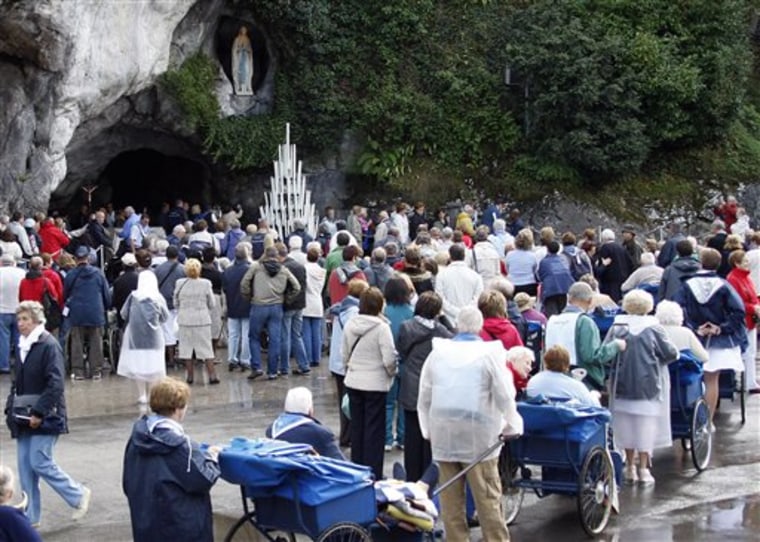An international doctors' panel appointed by the Roman Catholic Church said it's getting out of the "miracle" business at Lourdes.
The panel will no longer judge whether pilgrims to the French shrine could have benefited from "miracle" healing — a huge shift from the centuries-old way of deciding what makes the cut as a divine cure.
"It seems 'miracle' may not be the right word to use anymore," Bishop Jacques Perrier of the Diocese of Tarbes and Lourdes said in a telephone interview Wednesday. "It's no longer a black-and-white question."
The shrine in the foothills of the Pyrenees mountains in southwestern France draws 6 million pilgrims a year, many of whom believe that its spring water can heal and even work miracles. Pope Benedict XVI traveled there in September to celebrate the 150th anniversary of apparitions of the Virgin Mary to 14-year-old Bernadette Soubirous.
Over the years, more than 7,000 pilgrims have claimed to have been healed after bathing in or drinking Lourdes water. The church has officially deemed 67 cures "miraculous."
In 1954, the Tarbes-Lourdes diocese created the panel of doctors today known as the International Medical Committee of Lourdes, which one doctor said for years all but decided whether healings were miracles.
But last weekend, the panel, known by its French initials CMIL, decided from now on it will only rule on whether healing cases were "remarkable," leaving it to the church to decide whether they are miracles, panel secretary Dr. Patrick Theillier said.
"It's a sort of rebellion, if you will, against laws that don't concern us — and shouldn't," he said by phone. "The medical corps must be independent of the ecclesiastic power."
"Before, what we presented to the church was a gift all wrapped up — and all the church had to say was 'I approve,' without making a lot of effort," said Theillier, referring judging would-be miracles. "Not today."
'Almost always impossible'
The church relies on seven criteria devised in 1734 to decide miracle healing, such as the gravity of the ailment, the accuracy of an original medical diagnosis and the suddenness and durability of the healing.
But applying those so-called Lambertini criteria today is "almost always impossible," the Notre Dame of Lourdes Sanctuary said in a report.
The church most recently approved a miracle at Lourdes in 2005. Catholic officials said Anna Santaniello of Italy was taken to bathe in the spring on a stretcher and came back on her own two feet, cured of severe heart disease and ailments that had left her unable to walk or speak properly.
The Lourdes committee is independent of the Vatican's miracle-vetting outfit, the Congregation for the Causes of Saints, which investigates reports of miraculous cures as part of the church's saint-making process.
"Our congregation doesn't deny what Lourdes is doing, but we do not recognize what they are doing," the Rev. Peter Gumpel, a Jesuit who works with the Congregation, said in Rome. "Our procedures are much stricter."
He said he knew of no other shrine that had a similar miracle-making outfit.
Gumpel said the Congregation still uses the Lambertini rules, established by Cardinal Prospero Lorenzo Lambertini — the future Pope Benedict XIV — but said they have been modified as medical science progressed.
